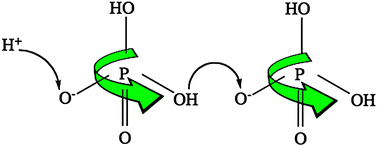Proton transport in choline dihydrogen phosphate/H3PO4 mixtures
Abstract
Mixtures of the plastic crystal material

* Corresponding authors
a
Department of Materials Engineering and the ARC Centre of Excellence for Electromaterials Science, Monash University, Clayton, Vic, Australia
E-mail:
usmanali.rana@eng.monash.edu.au, maria.forsyth@eng.monash.edu.au
Fax: +61 3 95588122
Tel: +61 3 99054939
b Department of Chemistry, Monash University, Clayton, Vic, Australia
Mixtures of the plastic crystal material

 Please wait while we load your content...
Something went wrong. Try again?
Please wait while we load your content...
Something went wrong. Try again?
U. A. Rana, P. M. Bayley, R. Vijayaraghavan, P. Howlett, D. R. MacFarlane and M. Forsyth, Phys. Chem. Chem. Phys., 2010, 12, 11291 DOI: 10.1039/C0CP00156B
To request permission to reproduce material from this article, please go to the Copyright Clearance Center request page.
If you are an author contributing to an RSC publication, you do not need to request permission provided correct acknowledgement is given.
If you are the author of this article, you do not need to request permission to reproduce figures and diagrams provided correct acknowledgement is given. If you want to reproduce the whole article in a third-party publication (excluding your thesis/dissertation for which permission is not required) please go to the Copyright Clearance Center request page.
Read more about how to correctly acknowledge RSC content.
 Fetching data from CrossRef.
Fetching data from CrossRef.
This may take some time to load.
Loading related content
